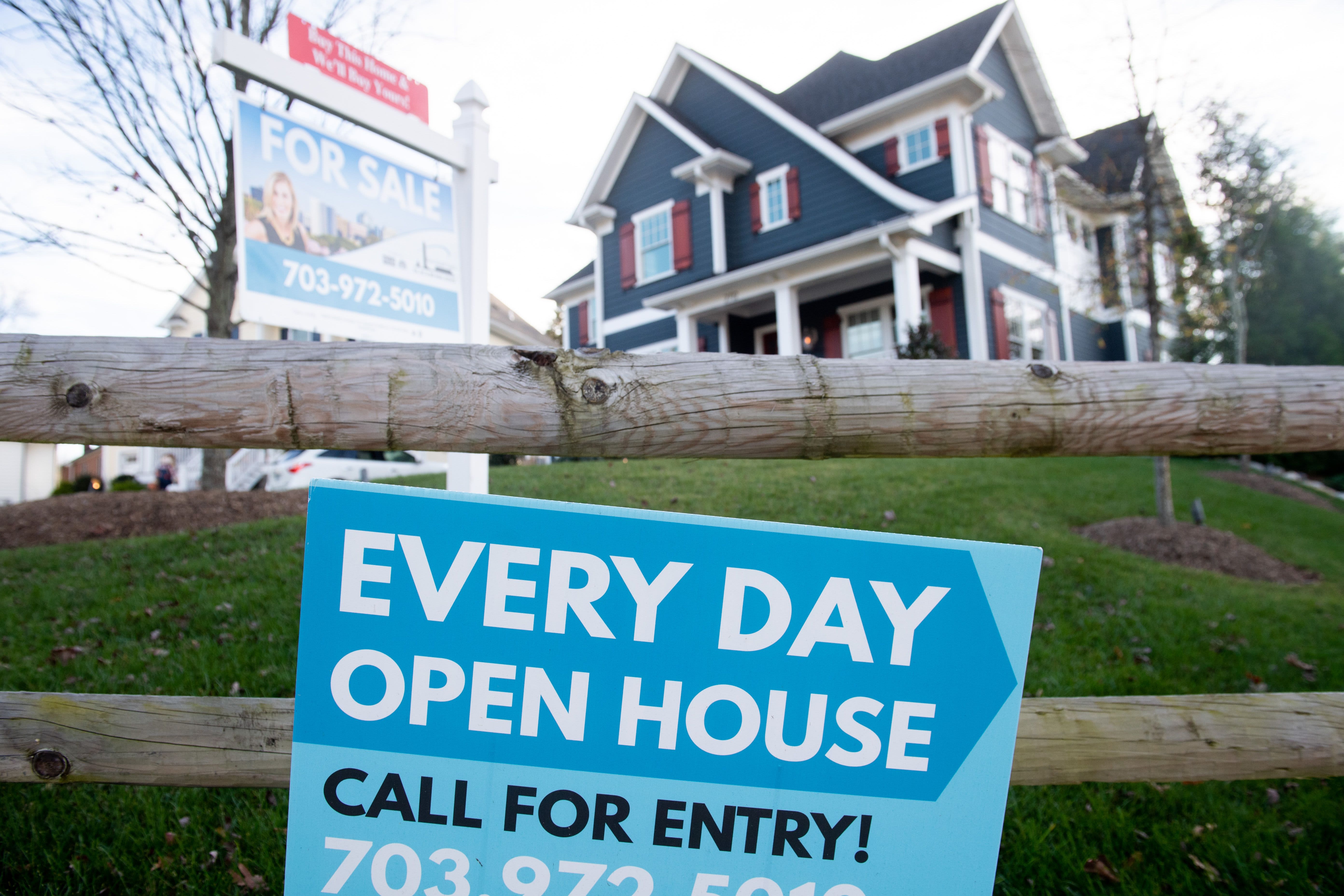A house’s real estate for sale sign is seen in front of a home in Arlington, Virginia, November 19, 2020.
Saul Loeb | AFP | Getty Images
The recent sharp rise in interest rates is now taking a toll on mortgage refinance demand, as the number of borrowers who could benefit shrinks.
Applications to refinance a home loan fell 5% last week compared with the previous week, according to the Mortgage Bankers Association’s seasonally adjusted index. They were also 43% lower compared with the same week one year ago. That is the first year-over-year drop since March 8, 2019. Last year at this time mortgage rates fell dramatically as fears of the coronavirus hit financial markets. That caused a large spike in refinance demand, hence this year’s comparison.
The refinance share of mortgage activity decreased to 64.5% of total applications from 67.5% the previous week.
The average contract interest rate for 30-year fixed-rate mortgages with conforming loan balances ($548,250 or less) increased to 3.26% from 3.23%, with points decreasing to 0.43 from 0.48 (including the origination fee) for loans with a 20% down payment. While the weekly move is not that large, rates are now up 40 basis points since the start of this year.
“Signs of faster economic growth, an improving job market and increased vaccine distribution are pushing rates higher,” said Joel Kan, MBA’s associate vice president of economic and industry forecasting. “The run-up in mortgage rates continues to cool demand for refinance applications. Activity declined last week for the fourth time in five weeks.”
As rates rise, the pool of borrowers who can benefit from a refinance shrinks. About 15% of borrowers have 30-year fixed first mortgages with rates lower than 3%, and about half of all borrowers have rates below 4%, according to Black Knight.
Mortgage applications to purchase a home, which are less sensitive to weekly rate moves, rose 7% for the week but were just 2% higher than the same week one year ago. As we now pass the one-year anniversary of the coronavirus pandemic here in the U.S., that annual comparison will likely go negative significantly. Home sales stalled in April and May of 2020 during the initial lockdowns, before rebounding strongly last summer.
“With the spring buying season at the doorstep, the purchase market had its strongest showing in four weeks, with gains in both conventional and government applications,” said Kan, noting that loan sizes moderated for the second straight week – potentially a sign that more first-time buyers are entering the market.
Mortgage rates leveled off to start this week and even pulled back very slightly on Tuesday, but they could make another decisive move Wednesday, following the 10-year Treasury auction. Mortgage rates loosely follow the yield on that bond.
“This essentially gives the market a chance to vote on whether the recent run-up in rates is sufficient to reflect progress against the pandemic and progress toward a stronger economy,” wrote Matthew Graham, chief operating officer of Mortgage News Daily.
